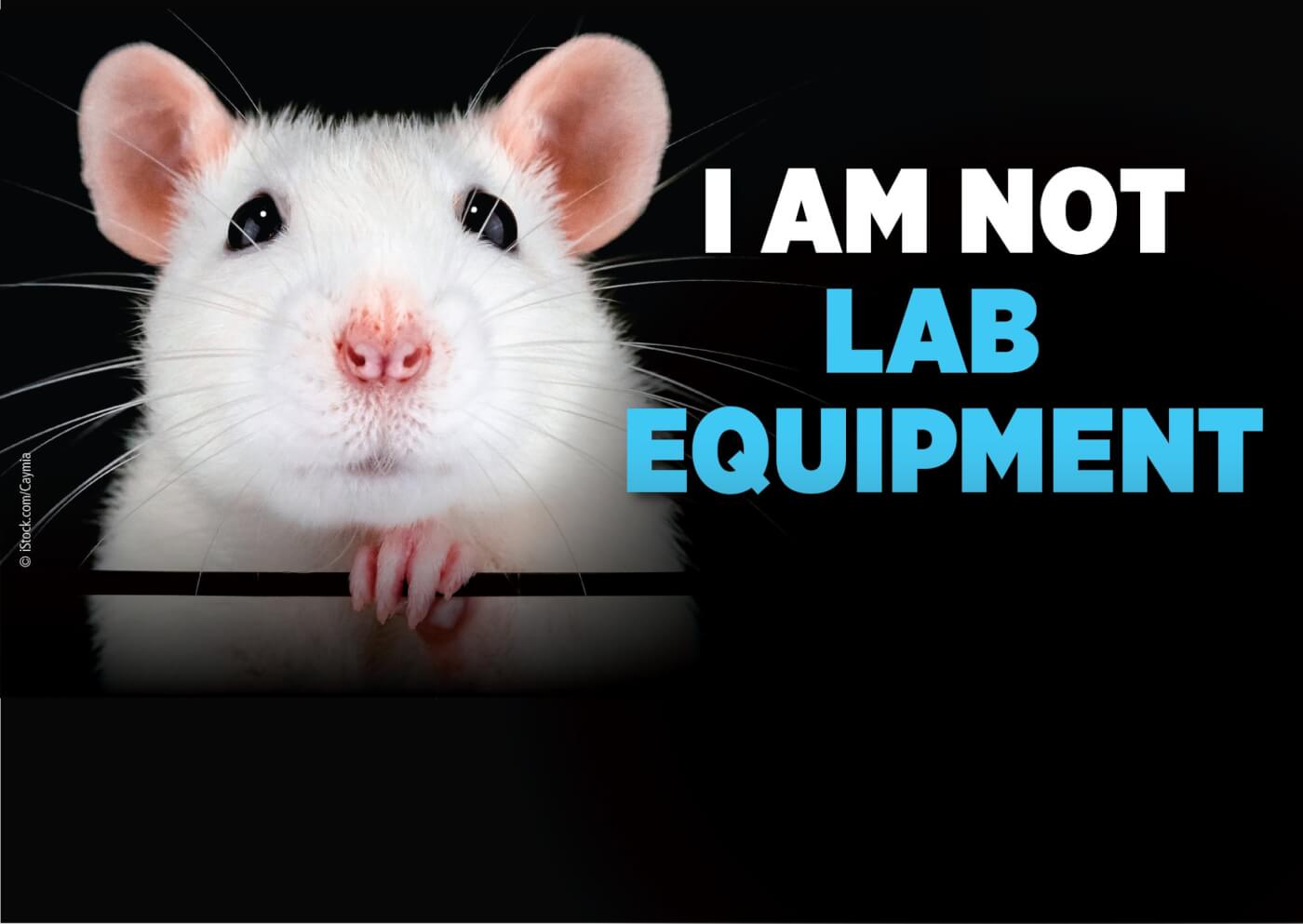How AI and VR Are Saving Animals From Experiments
The use of artificial intelligence (AI) and virtual reality (VR) in scientific and medical research could lead to a future in which animal-free research methods become the standard—and no living, feeling beings are imprisoned in laboratories.
Keep reading to learn more about why AI and VR represent the future of research—and how these revolutionary forms of technology are already helping both humans and our fellow animals.
Why We Desperately Need to Embrace Modern Research
Our current system is broken. U.S. laboratories waste billions of taxpayer dollars each year to torment and kill millions of animals in cruel, pointless experiments—a majority of which fail to produce relevant or reliable results. Experimenters force animals to inhale toxic fumes, drill holes into their skulls, apply chemicals to their eyes, conduct invasive surgeries on them—and animals who don’t die during the experiments are killed afterward.
The failure rate of these experiments is astounding: 95% of all new drugs that are tested on animals fail in human clinical trials because they don’t work or are too dangerous. Likewise, 90% of basic research, most of which involves animals, never results in any treatment or cure for humans. Yet experimenters attempt to justify the suffering of more animals in laboratories and get funding for even more flawed experiments—and the cycle of abuse and failure continues.
It’s long been clear that we need to replace archaic tests on animals with modern, human-relevant research methods.
What Is AI?
AI uses the extraordinary power of modern computers and robots to mimic and enhance human problem-solving and decision-making capabilities in order to address complicated issues.
Can AI Replace Tests on Animals?
Yes, and it’s already happening. Regulatory agencies require that companies test chemicals, pesticides, pharmaceuticals, and other products before they’re brought to market. Each year, millions of animals are used in these crude and time-consuming tests, most of which were developed decades ago. However, tools are being created using AI that can determine whether medicines and chemicals are safe, with just the stroke of a few keys.
Companies like Smarter Sorting are racing to replace animal testing with computer models, making products safer for humans and saving a lot of money in the process. One animal-replacing computer model alone could save 2.8 million animals and $490 million in testing costs, while generating more reliable data that will protect consumers.
How Can VR Software Be Used in Medicine?
Some medical training programs are embracing advanced human-patient simulation technology powered by VR software that accurately mimics human anatomy. In fact, a number of obstetrics and gynecology (OB/GYN) residency programs now use animal-free training methods.
For example, OB/GYN residents at the renowned Rush University Medical Center in Chicago are now training on a state-of-the-art VR surgical system instead of practicing invasive procedures on live pigs—a victory that PETA helped secure by donating $6,000 toward the purchase of a simulator module.
Can We Trust AI- and VR-Based Research?
The U.S. Food and Drug Administration recognizes that AI will be responsible for ensuring that safe, lifesaving products are available much faster than could ever be achieved by relying on tests on animals.
What YOU Can Do to Push for Modernized Research
Urge Oregon Health & Science University to abandon its cruel, deadly OB/GYN residency training on live pigs and adopt superior, animal-free methods instead:
Support PETA’s Research Modernization Deal, which provides a strategy for replacing experiments on animals with modern, human-relevant research:
PETA’s Abduction experience highlights the power of VR technology by putting users on the experimentation table. In this terrifying simulated experience touring college campuses across the U.S., students are virtually abducted and subjected to cruel experiments—a nightmare that’s a reality for countless animals who are still imprisoned in laboratories today. Learn more about Abduction:


